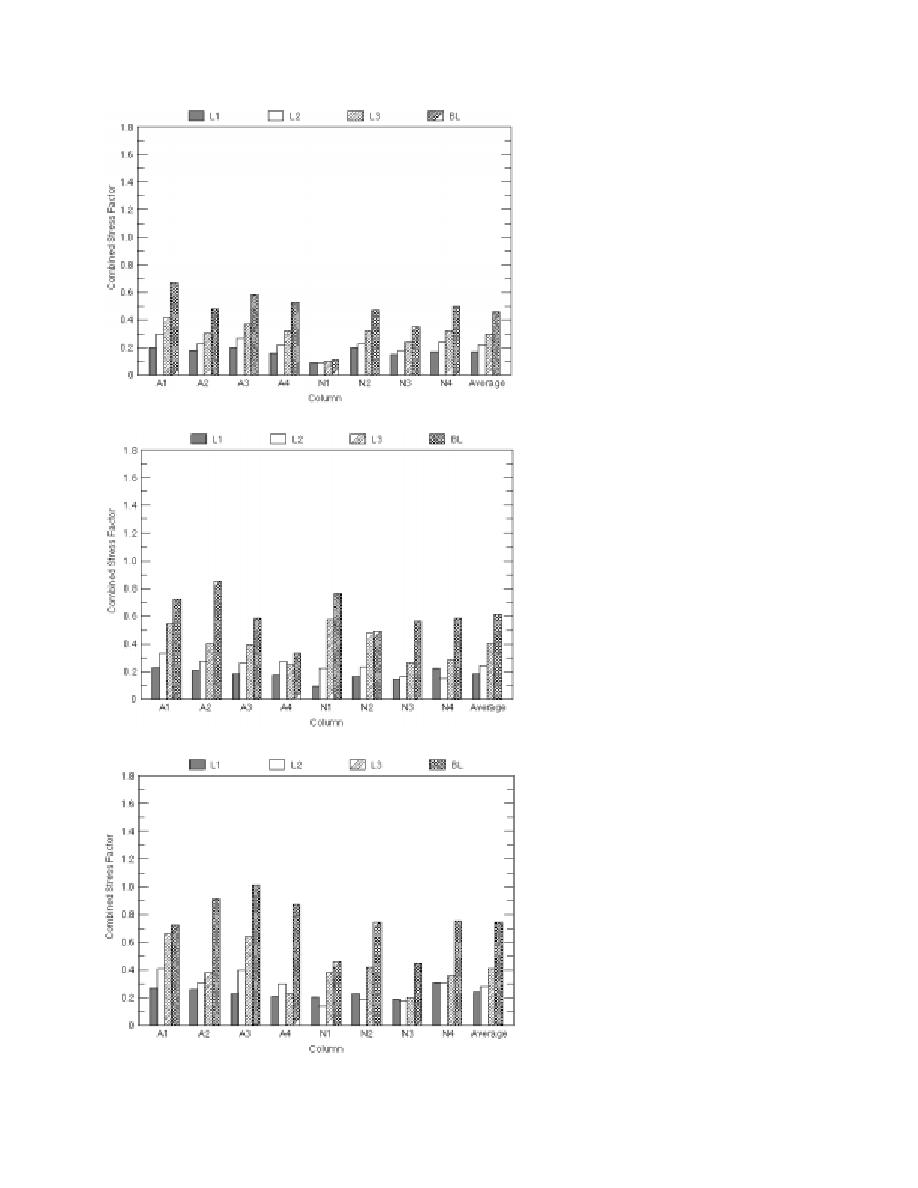
APPENDIX B: SUPPORTING
STRUCTURE STRESS
MEASUREMENT DATA, 19831988
Figure B1 contains sway bolt data
for the building level only. At the time
readings were taken, work was not
complete on the 1983 lift operation.
Stress factors for other levels are ex-
trapolations from the building level
stresses.
Figure B2 contains the second com-
plete set of combined stress factors
since the move in 1982.
Figure B3 contains the second com-
plete set of combined stress factors
since the move in 1982.
Figure B1. Swaybolt loads: 1983.
Figure B4 contains the third com-
plete set of combined stress factors
since the move in 1982. It is interesting
to compare stress factors for 1984
through 1986 for trends. High stress
concentration factors in general, and
especially at column A4 (>1.60), led to
a recommendation that work be con-
tracted for the next summer to allevi-
ate some of the high stresses. Column
tilts were also a factor in this decision.
Figure B5 contains the fourth com-
plete set of combined stress factors
since the move in 1982 and the first
since the mini-life-extension of 1987.
Comparing stress factors for 1984
through 1987 points up several trends
that are more obvious when examin-
Figure B2. Swaybolt loads: 1984.
ing Figure 12. Although the mini-life-
extension served to lower most stress
and redistribute stresses among the
columns in general, trends dictated a
repeat of the work performed in 1987
to assure the structural integrity of the
building. Another mini-life-extension
was therefore recommended for 1988.
Figure B6 contains the final com-
plete set of combined stress factors cal-
culated for DYE-2 and the second
since the mini-life-extension of 1987.
Comparing stress factors for 1984
through 1988 points up several trends
which are more obvious when examin-
ing Figure 12. Although the mini-life-
extension was recommended for the
summer of 1988, funding difficulties
were encountered and the work was
Figure B3. Swaybolt loads: 1985.
21



 Previous Page
Previous Page
